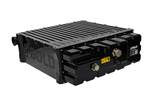Eviation completes conceptual design review of Alice aircraft
The all-electric company moves closer to commercialization, confirming an aircraft configuration that is both certifiable and can streamline manufacturing.
Eviation Aircraft (Arlington, Wash., U.S.), a manufacturer of all-electric aircraft, has announced the completion of conceptual design review (CoDR) for its Alice aircraft. The review assures a configuration that is both certifiable and enables streamlined manufacturing. It maintains Alice’s signature look, while optimizing performance and further enhancing its cabin experience.
The CoDR, conducted with the support of TLG Aerospace (Seattle, Wash., U.S.), built on the extensive data gathered from Alice’s pioneering 2022 flight, wind tunnel testing completed at the Kirsten Wind Tunnel in Seattle in March 2024, feedback from Eviation’s customer advisory board and months of engineering work.
Features introduced in the production aircraft design include:
- A constant cross-section that reduces Alice’s part count and manufacturing costs, while also enabling future variants of the aircraft;
- Structural segments designed for field reassembly with standard tooling available to maintenance, repair and overhaul (MRO) services;
- A larger, centralized energy storage system (ESS) compartment above the wing that can integrate a range of ESS solutions now and in the future, in addition to streamlining certification;
- Optimized cabin space enabling a side mounted carry-on stowage compartment, said to be unique in the commuter class.
Alice’s nine-seat commuter and cargo versions are designed to provide customers and passengers with innovative technology and a beautiful design, while also providing carbon-free, cost-effective and convenient point-to-point travel.
“Completing the CoDR is a major step in Alice’s journey, moving us closer to aircraft certification and entry into service,” says Andre Stein, CEO of Eviation. “The latest refinements have further enhanced the design of Alice, which has received orders from operators around the world keen to decarbonize their fleets.”
Related Content
-
The potential for thermoplastic composite nacelles
Collins Aerospace draws on global team, decades of experience to demonstrate large, curved AFP and welded structures for the next generation of aircraft.
-
Composites manufacturing for general aviation aircraft
General aviation, certified and experimental, has increasingly embraced composites over the decades, a path further driven by leveraged innovation in materials and processes and the evolving AAM market.
-
Infinite Composites: Type V tanks for space, hydrogen, automotive and more
After a decade of proving its linerless, weight-saving composite tanks with NASA and more than 30 aerospace companies, this CryoSphere pioneer is scaling for growth in commercial space and sustainable transportation on Earth.

















